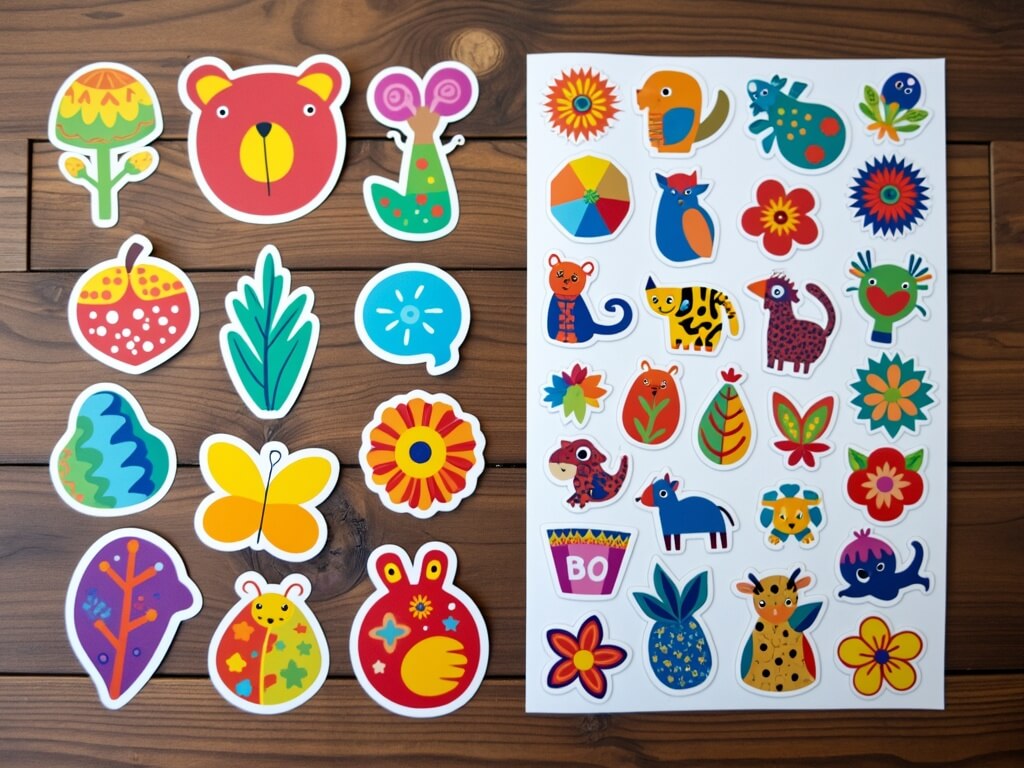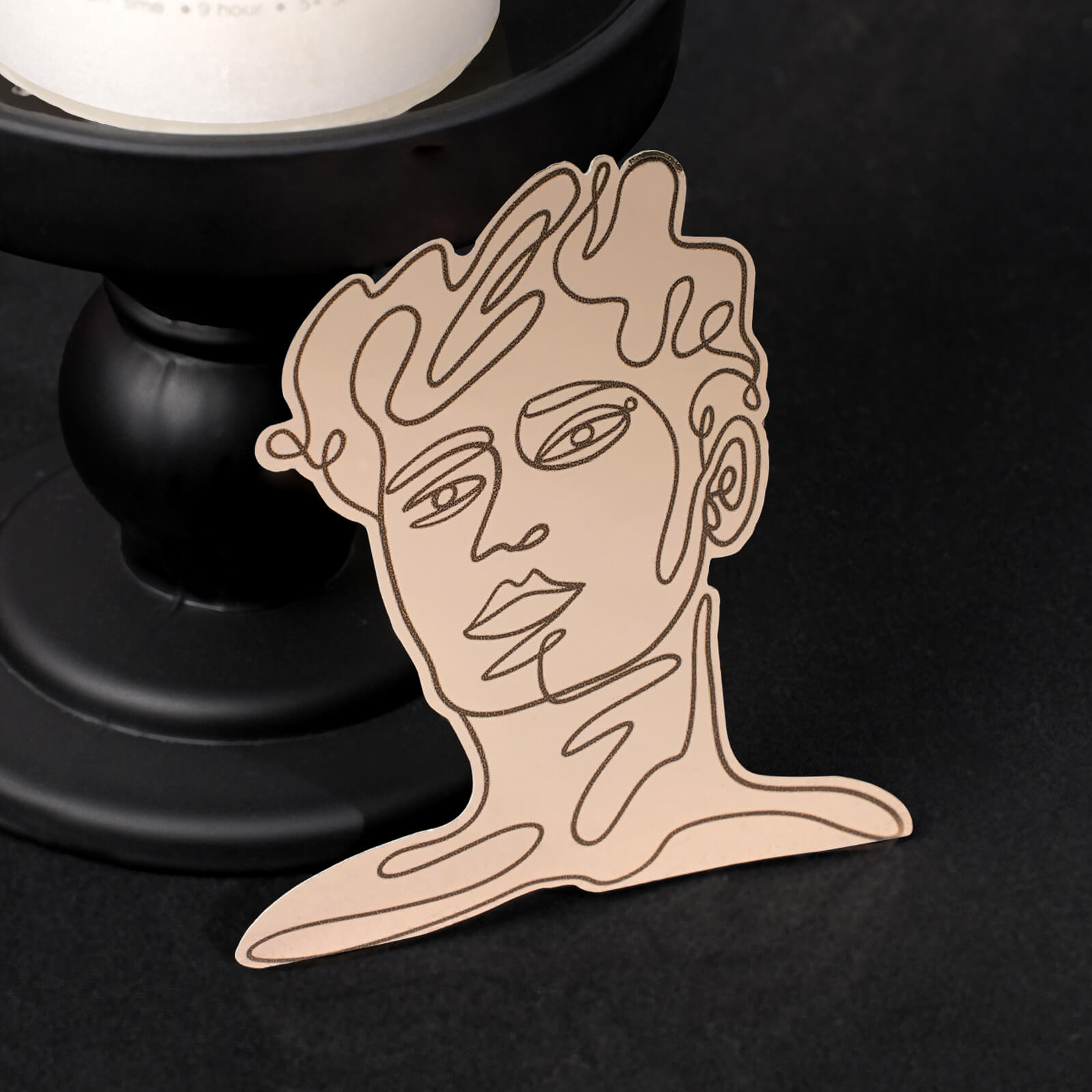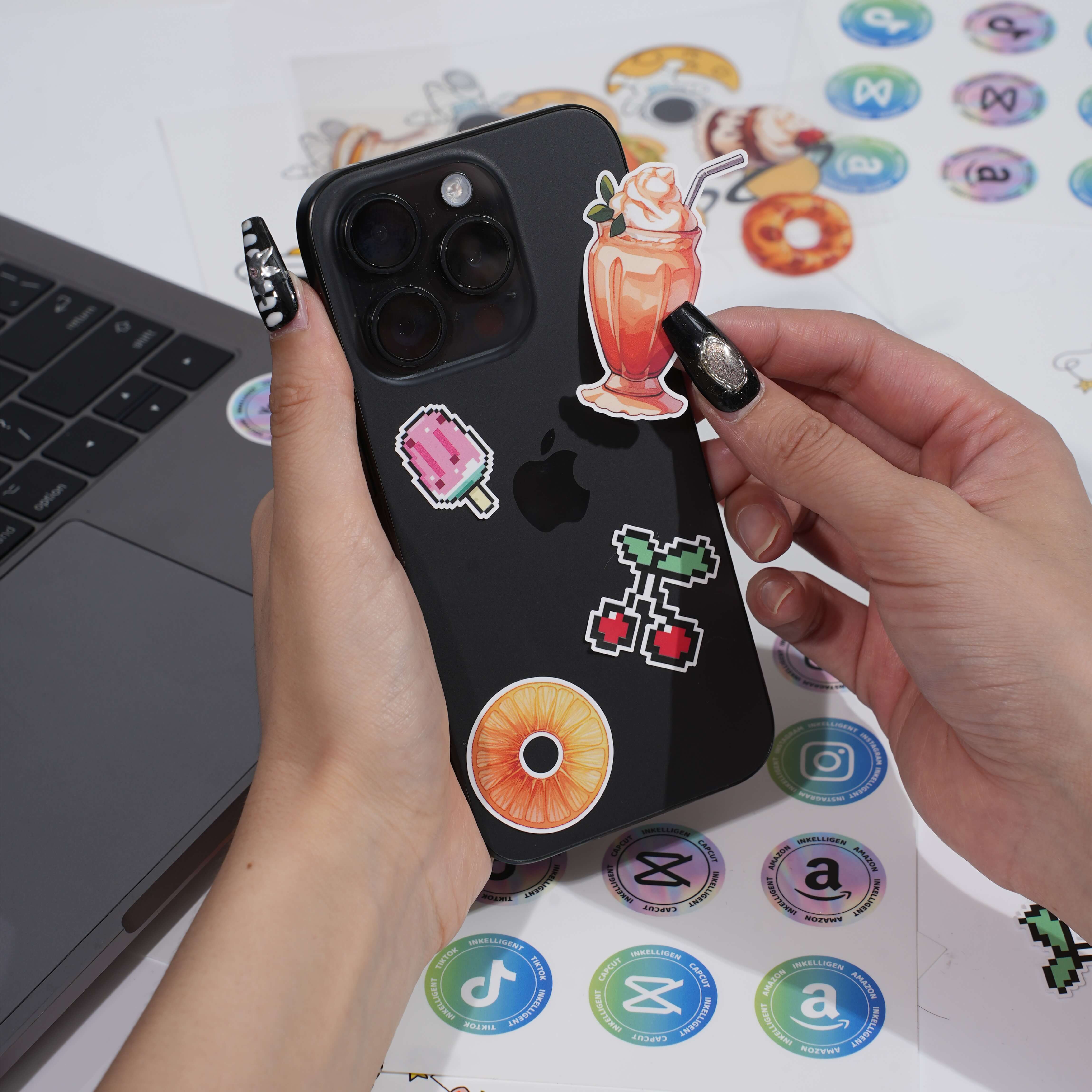In today's highly competitive clothing market, brands are constantly exploring new marketing methods to stand out. Stickers, this seemingly insignificant small element, are gradually becoming a powerful tool for clothing brands to enhance their influence. So, how exactly do stickers achieve this?
Integration of Visual Design and Brand Tone
As part of the visual presentation of clothing brands, the integration of sticker design and brand tone is crucial.
How the Graphics, Colors, and Materials of Stickers Echo Clothing Styles
Different styles of clothing need to be matched with corresponding stickers to better showcase the brand's characteristics. For minimalist clothing, which emphasizes simplicity and purity, matte plain stickers complement it well. They are not overly ostentatious and can be perfectly integrated into the overall simple atmosphere of the clothing. Street fashion brands, on the other hand, often pursue individuality and avant - garde styles. Fluorescent three - dimensional stickers, with their bright colors and three - dimensional texture, can instantly attract attention, perfectly match the style of street fashion brands, and make the clothing more trendy.
How to Strengthen Brand Stories Through Stickers
Stickers can serve as a carrier of brand stories, conveying brand concepts to consumers. Take the COACH Douyin Challenge as an example. It uses GAN technology stickers and carries out activities around the theme of "courage". Participants use the stickers for creation, and in the process of interaction, the spiritual core of "courage" that the brand wants to convey is constantly strengthened, allowing consumers to more deeply understand and remember COACH's brand story in fun interactions.
How to Innovatively Apply Cultural Elements or Technological Elements
Integrating cultural elements into sticker design can add unique connotations to the brand. For example, incorporating traditional patterns or calligraphy into clothing stickers not only showcases the charm of traditional culture but also makes the clothing more culturally rich, attracting consumers who are interested in traditional culture. The application of technological elements, such as AR interactive stickers, can bring consumers a brand - new experience. Scanning specific patterns on the stickers can trigger corresponding AR effects, increasing the fun and interactivity of the clothing and making the brand more technological and fashionable.
The Value and Limitations of Stickers as Marketing Tools
Stickers have unique value in clothing brand marketing, but they also have certain limitations.
Reasons Why Clothing Brands Are Keen to Use Stickers as Gifts, Co - branding Carriers, or Packaging Elements
The reason why stickers are favored by many clothing brands is that they have strong attractiveness and communication power. For example, the limited - edition stickers launched by UNIQLO in collaboration with KAWS triggered a rush among consumers. Limited - edition stickers can not only increase the added value of products and attract consumers to buy clothing but also expand the brand's audience and enhance brand awareness with the influence of both sides of the collaboration.
How Stickers Achieve Low - Cost Brand Exposure, User Interaction, and the Creation of a Sense of Scarcity
Sticker marketing has a relatively low cost but remarkable effects. The sticker activity in the COACH Douyin Challenge had more than 600 million exposures, which is a typical case of achieving high brand exposure at a low cost. Consumers use stickers for UGC sharing, which not only increases interaction between users but also allows brand information to spread widely through social networks. In addition, limited - edition stickers themselves have scarcity, which can stimulate consumers' desire to collect and purchase, creating an atmosphere of supply exceeding demand.
However, sticker marketing also has limitations. Excessively widespread stickers may cause consumers to have aesthetic fatigue, and some sticker designs are seriously homogenized, making it difficult to form unique brand memory points.
Consumer Acceptance and Participation Motivation
Understanding consumers' acceptance of stickers and their participation motivation can help brands better design and use stickers.
What Types of Stickers Do Young Consumers, Especially Gen Z, Prefer?
Young consumers, especially Gen Z, pursue individuality and trends, and their preferences for stickers also vary. Emotional slogan stickers can convey positive emotions and attitudes, which is in line with Gen Z's focus on self - expression and emotional resonance. Trendy symbol stickers, such as BLACK EYE PATCH co - branded stickers, keep up with fashion trends and can meet their needs for pursuing fashion and showing individuality. Practical functional stickers, such as size stickers and warmth prompt stickers, can provide them with practical convenience and are also loved by some consumers.
The Correlation Between Social Media Sharing Willingness and Sticker Design
There is a close correlation between social media sharing willingness and sticker design. Stickers with unique, interesting, and topical designs are more likely to stimulate consumers' desire to share. For example, those with creative patterns, funny elements, or that can show individuality, consumers are willing to display them on social media, thus driving the spread of brand information. On the contrary, stickers with mediocre and unremarkable designs are difficult to arouse consumers' interest, resulting in a low sharing rate.
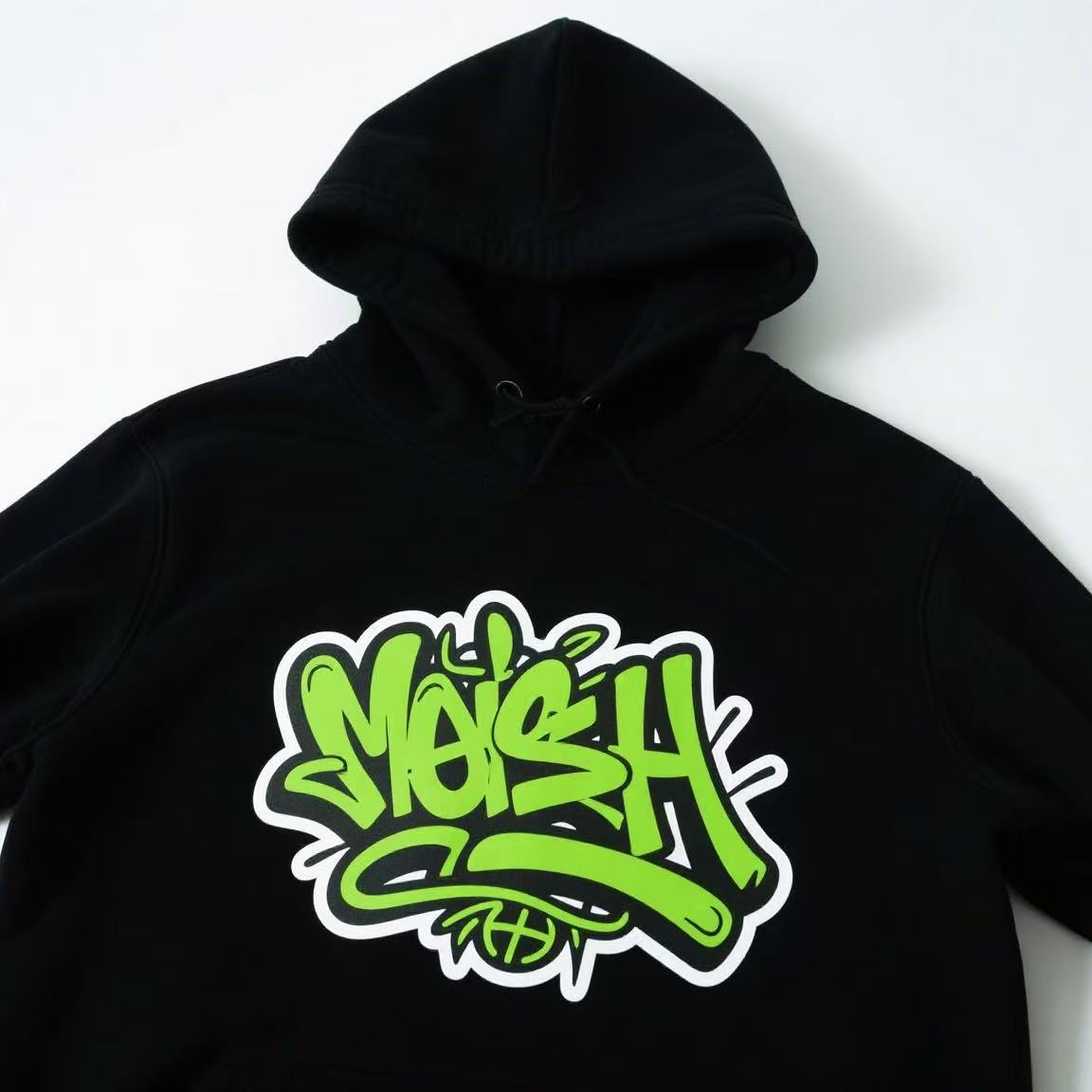
The Sustainability of Limited - Edition Stickers and Co - branding Strategies
Limited - edition stickers and co - branding strategies can bring popularity to brands in the short term, but their sustainability needs to be considered.
Does "Purchasing Clothing with Limited - Edition Stickers as Gifts" Really Improve the Repurchase Rate?
"Purchasing clothing with limited - edition stickers as gifts" can stimulate consumers' purchasing behavior to a certain extent, but the effect on improving the repurchase rate varies from person to person. Some consumers may buy clothing again because they want to collect limited - edition stickers, but others may buy only once to get the stickers and then no longer repurchase. Therefore, brands cannot rely solely on limited - edition stickers to improve the repurchase rate, but also need to pay attention to core factors such as the quality and style of clothing.
Do Consumers Pay for Stickers or for the Clothing Itself?
In the purchasing behavior, consumers' motivations are different. Some consumers do buy clothing because they like limited - edition stickers, and their love for stickers even exceeds that for the clothing itself. However, more consumers still take factors such as the style, quality, and brand of the clothing as the main basis for purchase, and stickers are just an additional attraction.
Will Frequent Use of Co - branded Stickers Dilute the Brand's Uniqueness?
Frequent use of co - branded stickers may dilute the brand's uniqueness. If a brand co - brands with too many objects of different styles, it will make consumers have a vague sense of the brand's core positioning, making it difficult to form a stable brand cognition.
How to Balance Short - Term Topic Popularity and Long - Term Brand Equity Accumulation
To balance short - term topic popularity and long - term brand equity accumulation, brands need to formulate reasonable strategies. When launching limited - edition stickers and co - branding activities, it is necessary to ensure that the activities are consistent with the brand's core values and tone, and not blindly follow the trend for short - term popularity. At the same time, it is necessary to control the frequency of co - branding, pay attention to the quality of co - branding, so that each co - branding can have a positive impact on the brand and help the accumulation of long - term brand equity.
Industry Trends and Cooperation Innovation Issues
With the development of the times, the application of stickers in the clothing industry is also showing new trends and cooperative innovation models.
Application Scenarios of Metaverse and Digital Stickers
How Virtual Clothing Stickers Integrate into Brand Narration
Virtual clothing stickers, such as the GAN technology digital avatar stickers used by COACH in the Douyin Challenge, provide a new way for brand narration. Brands can build virtual brand scenes and stories through virtual stickers, allowing consumers to have a deeper understanding of brand culture and concepts in the virtual world and enhancing the emotional connection between brands and consumers.
Can Physical Stickers Be Linked with Digital Experiences?
It is feasible to link physical stickers with digital experiences. For example, scanning physical stickers through AR can trigger relevant online content, such as brand story videos and product introductions, bringing consumers an experience that combines virtual and real. In addition, NFT sticker collections also provide new possibilities for the linkage between physical stickers and digital experiences. Consumers can obtain corresponding NFT stickers by purchasing physical clothing, which increases the collection value and interest of the stickers.
Will Future Clothing Marketing Move Towards a "Virtual - Real Integrated Sticker Ecosystem"?
Judging from the current development trend, future clothing marketing is likely to move towards a "virtual - real integrated sticker ecosystem". With the rise of the metaverse concept and the continuous development of digital technology, the integration of virtual stickers and physical stickers will bring consumers a richer and more diverse experience, and also provide brands with more marketing channels and methods to further enhance brand influence.
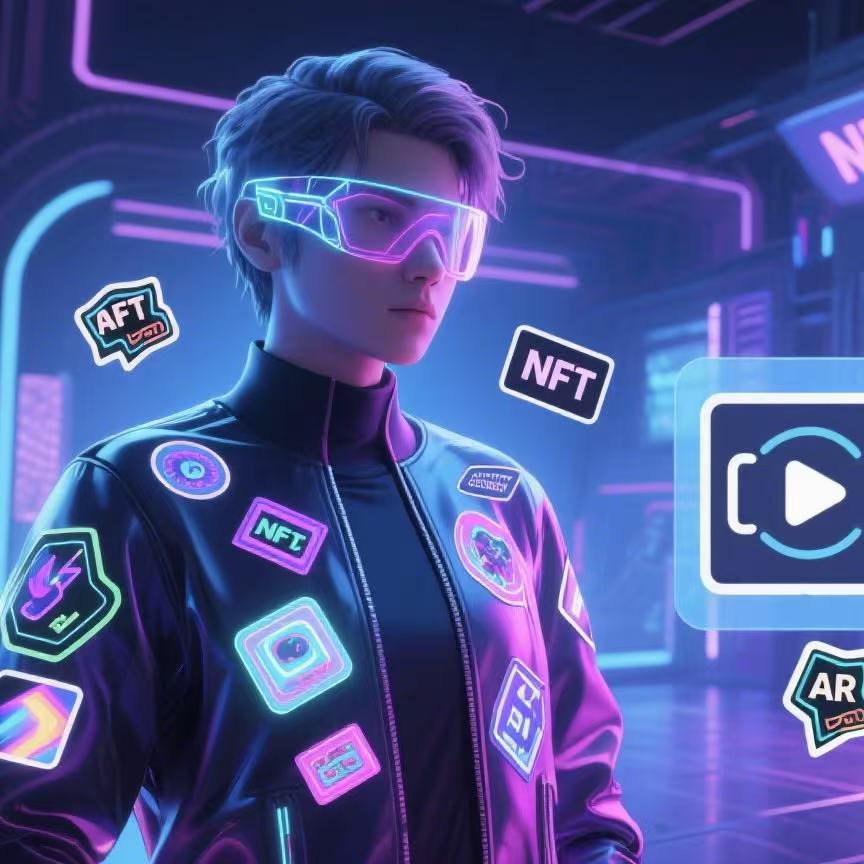
Innovation and Risk Points of Cross - border Cooperation
How Do Clothing Brands Balance the Creative and Commercial Goals of Both Parties When Cooperating with Other Entities to Develop Stickers?
When clothing brands cooperate with artists, designers, IPs, etc. to develop stickers, it is necessary to find a balance between the creativity and commercial goals of both parties. The two parties of the cooperation should fully communicate, understand each other's needs and expectations, and while ensuring the uniqueness of sticker creativity, also consider market acceptance and commercial benefits. For example, the "STICK TOGETHER" series cooperated by FILA FUSION and BLACK EYE PATCH integrates the creative elements of both parties and meets market needs, achieving good results.
Possible Controversies Arising from Cross - border Cooperation
Cross - border cooperation may cause controversies due to cultural conflicts or out - of - control quality. When integrating multicultural elements, improper handling may hurt the feelings of certain groups and trigger cultural controversies. In addition, if the quality control is out of control during the cooperation process and the quality of the stickers does not meet expectations, it will also affect the brand's image. Therefore, when conducting cross - border cooperation, brands should make sufficient research and preparations, and strengthen the supervision and management of the cooperation process.
How to Implement Consumer Co - creation of Sticker Designs
Consumer co - creation of sticker designs is an emerging cooperation model, which can allow consumers to better participate in brand building. Brands can let consumers participate in the sticker design process through online collection and voting, select the most popular designs for production. In the implementation process, brands need to do a good job in organization and guidance to ensure the fairness and impartiality of the activity. At the same time, they also need to reasonably screen and optimize consumers' designs to conform to the brand's tone and requirements.
In conclusion, stickers have great potential in enhancing the influence of clothing brands. However, when using stickers for marketing, brands need to comprehensively consider various factors such as visual design, consumer needs, and sustainability, and constantly innovate and optimize strategies to give full play to the role of stickers and achieve the improvement of brand influence.
